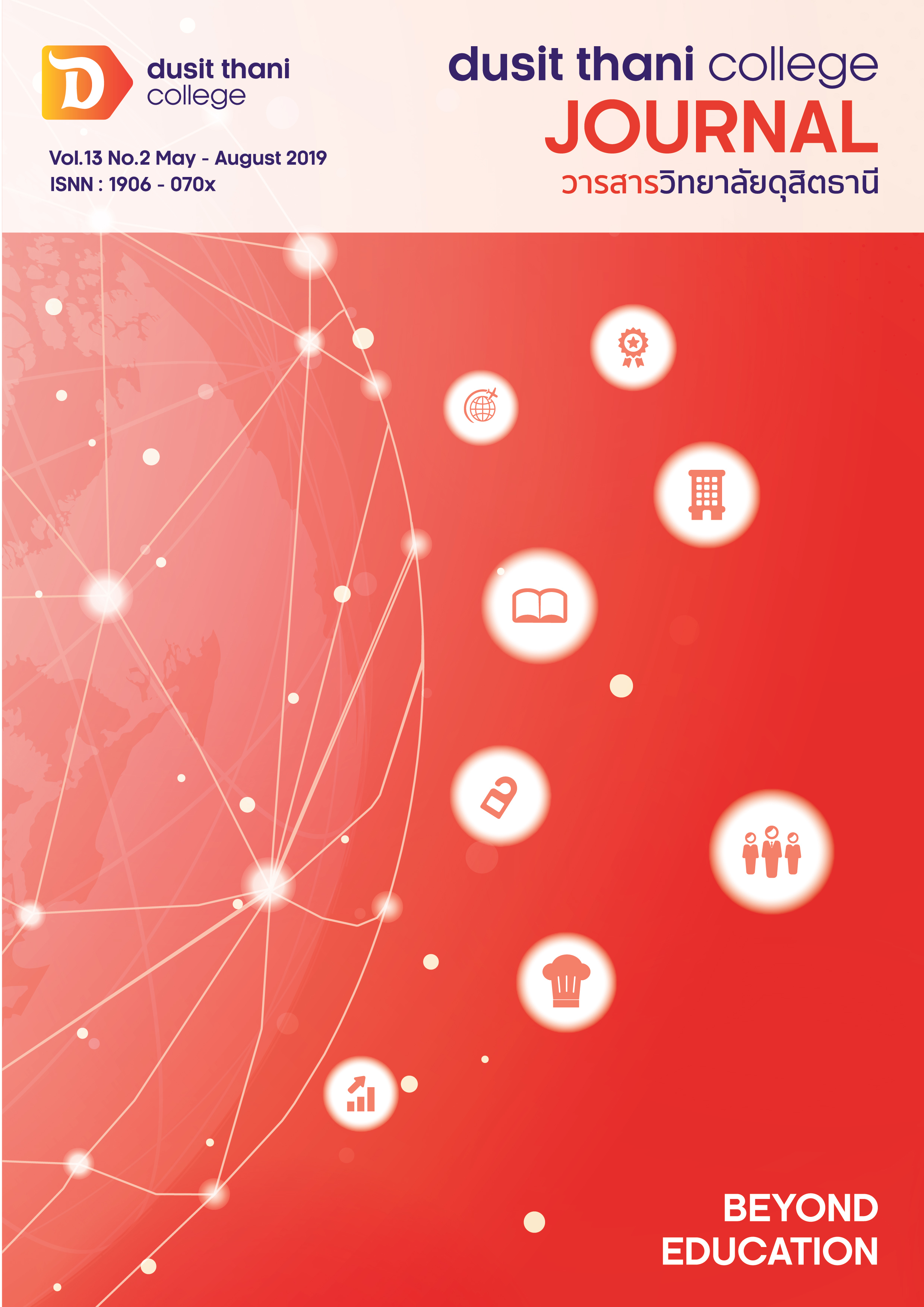การพยากรณ์อนุกรมเวลาด้วยวิธีแบบคลาสสิค : การส่งออกข้าวหอมมะลิของไทย
Main Article Content
บทคัดย่อ
การศึกษาครั้งนี้มีวัตถุประสงค์เพื่อศึกษาแนวโน้ม การแปรผันตามฤดูกาล และการพยากรณ์มูลค่าการส่งออกข้าวหอมมะลิของประเทศไทย ปี 2561 - 2562 ข้อมูลที่นำมาใช้ในการสร้างตัวแบบการพยากรณ์เป็นข้อมูลรายไตรมาส แบ่งออกเป็น 2 ชุด คือ ชุดที่ 1 ข้อมูลสำหรับสร้างตัวแบบ (Training Data) ชุดที่ 2 ข้อมูลสำหรับทดสอบตัวแบบ (Testing Data) ที่ได้มาจากการรวบรวมของสำนักงานเศรษฐกิจการเกษตร ทำการวิเคราะห์อนุกรมเวลาด้วยวิธีแบบคลาสสิค ผลการศึกษาพบว่า ตัวแบบที่ใช้ในการพยากรณ์มีความแม่นยำสูงมาก ค่าเฉลี่ยเปอร์เซ็นต์ความคลาดเคลื่อนสมบูรณ์ (MAPE) ของข้อมูลที่สร้างตัวแบบมีค่าเท่ากับ 6.42 ส่วนค่าเฉลี่ยเปอร์เซ็นต์ความคลาดเคลื่อนสมบูรณ์ของข้อมูลทดสอบตัวแบบมีค่าเท่ากับ 3.09 มูลค่าการส่งออกข้าวหอมมะลิของประเทศไทยมีแนวโน้มลดลงและมีการแปรผันตามฤดูกาลของการส่งออกข้าวหอมมะลิ มูลค่าการส่งออกข้าวหอมมะลิของประเทศไทยมากที่สุดในไตรมาสที่ 4 (มากกว่าปกติ ร้อยละ 17.63) และในไตรมาสที่ 2 ประเทศไทยมีมูลค่าการส่งออกข้าวหอมมะลิน้อยที่สุด (น้อยกว่าปกติ ร้อยละ 10.66)
Article Details
นโยบายการพิจารณากลั่นกรองบทความ
- บทความวิจัยและบทความวิชาการทุกเรื่องที่จะได้รับการตีพิมพ์ต้องผ่านการพิจารณากลั่นกรองโดยผู้ทรงคุณวุฒิ (Peer Review) ในสาขาที่เกี่ยวข้อง จำนวน 3 ท่าน/บทความ
- บทความ ข้อความ ภาพประกอบและตารางประกอบที่ลงตีพิมพ์ในวารสารเป็นความคิดเห็นส่วนตัวของผู้เขียน กองบรรณาธิการไม่จำเป็นต้องเห็นด้วยเสมอไป และไม่มีส่วนรับผิดชอบใด ๆ ถือเป็นความรับผิดชอบของผู้เขียนแต่เพียงผู้เดียว
- บทความที่จะได้รับการตีพิมพ์จะต้องไม่เคยตีพิมพ์ เผยแพร่ที่ใดมาก่อน และไม่อยู่ระหว่างการพิจารณาของวารสารฉบับอื่น หากตรวจสอบพบว่ามีการตีพิมพ์ซ้ำซ้อน ถือเป็นความรับผิดชอบของผู้เขียนแต่เพียงผู้เดียว
- บทความใดที่ผู้อ่านเห็นว่าได้มีการลอกเลียนหรือแอบอ้างโดยปราศจากการอ้างอิง หรือทำให้เข้าใจผิดว่าเป็นผลงานของผู้เขียน กรุณาแจ้งให้กองบรรณาธิการวารสารทราบจะเป็นพระคุณยิ่ง
เอกสารอ้างอิง
2. Office of Agricultural Economics. Jasmine Rice Export Statistics. Retrieved April 20,2018, from http://www.oae.go.th/oae_report/export_import/export.php.
3. Prachachat. (2015). Exporters - mill Choosing the standard "Jasmine" new. 60% secondary grades hit neighbors. Retrieved April 23,2018, from https://www.prachachat.net/news_detail.php?newsid=1434446873.
4. Sasithorn Kodsueb and Kanlaya Boonlha. (2016). “Construction of Model for the price of Thai jasmine rice 105.” Science and Technology Nakhon Sawan Rajabhat University Journal. 8(8), 49-60.
5. Sirilak Suwanwongse (1992). Time Series Analysis. 1st ed. Bangkok: Suweeriyasan.
6. Siwarit Pongsakornrungsilp. (2004). Business Statistics. 1st ed. Bangkok: Pearson Education, Inc.
7. Somphon Itsawilanon. (2014). World rice market and Thai export rice. Retrieved April 22,2018, from www.agripolicyresearch.com/wp-content/plugins/download.../download.php?id=159.
8. Thaipublica. (2011). Thai Rice Hits 2 Bounce "Flood - Pledge Rice". Retrieved May 4,2018, from https://thaipublica.org/2011/10/flood-rice-losing-market-share/.
9. Vichit Lorchirachoonkul and Jirawan Jitthavech. (2004). Forecasting Techniques. 3rd ed. Bangkok: WVO Officer of Printing Mill.
10. Warangkhana Keerativibool. (2014). “Forecasting Model for the Export Value of Thai Jasmine Rice.” Burapha Science Journal. 19(1), 78-90.


